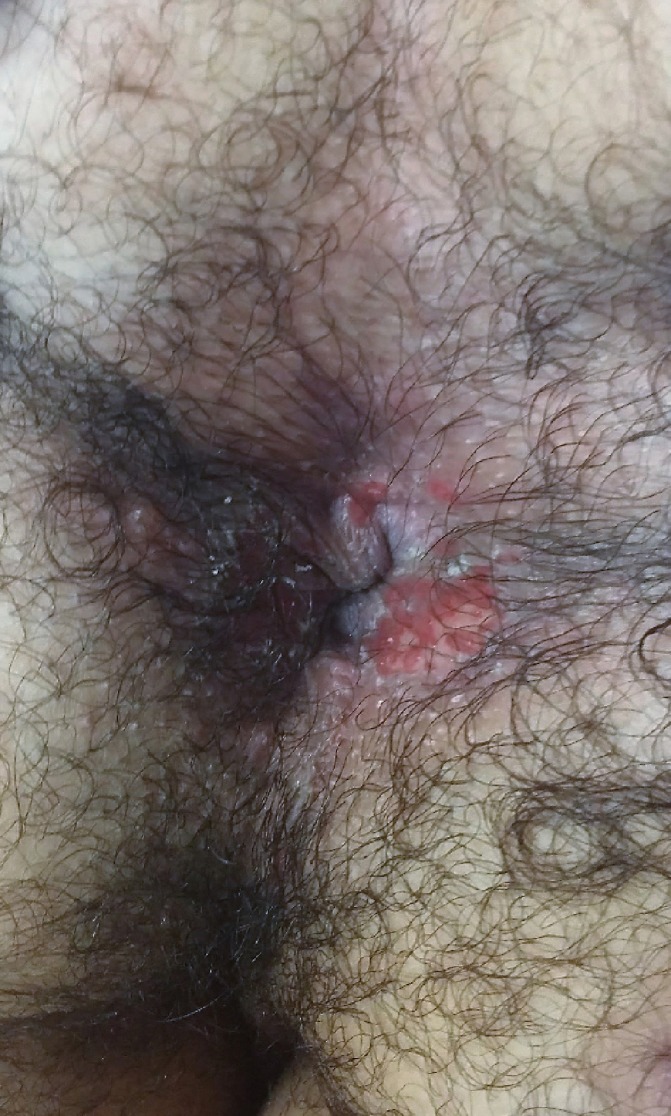Description
A 27-year-old man without significant past medical history presented to the emergency department with a 5-day evolution of abdominal and anal pain and haematochezia. Physical examination revealed perianal erythema and a painful digital anal examination without other findings. CT scans showed signs of proctitis (slight thickening of rectal wall and slight stranding of perirectal fat). Flexible rectosigmoidoscopy didn’t reveal any pathological abnormalities. The patient was discharged with antibiotics and analgesics with the suspicion of proctitis. Three days later, the patient returned to the emergency department with worsening of the anal pain that irradiated to the buttocks and the physical examination revealed red bumps with ulceration (figure 1). Anal herpes was suspected and the patient was treated with an antiviral (brivudine) and carbamazepine for symptomatic relief. Seven days after treatment the patient had complete resolution of his symptoms and there were no cutaneous lesions.
Figure 1.

Anal herpes.
Herpes simplex virus (HSV) infections are the main cause of genital ulcers worldwide, and HSV-2 is the serotype most frequently implicated in its aetiology.1 A visible outbreak consists of single or clustered vesicles on the genitalia, perineum, buttocks, upper thighs or perianal areas that ulcerate before resolving.2 Antiviral agents are effective in controlling clinical episodes, but do not eradicate infection, which remains latent for the life of a patient.3
Learning points.
Extragenital herpes is a difficult diagnosis.
High levels of suspicion and careful history-taking and physical examination are required to made a correct diagnosis.
Footnotes
Contributors: AG, JP and PL contributed equally in planning, writing and reviewing the article.
Competing interests: None declared.
Patient consent: Obtained.
Provenance and peer review: Not commissioned; externally peer reviewed.
References
- 1.Gupta R, Warren T, Wald A, et al. . Genital herpes. Lancet 2007;370:2127–37.doi:10.1016/S0140-6736(07)61908-4 [DOI] [PubMed] [Google Scholar]
- 2.Groves MJ. Genital herpes: a review. Am Fam Physician 2016;93:928–34. [PubMed] [Google Scholar]
- 3.Garland SM, Steben M. Genital herpes. Best Pract Res Clin Obstet Gynaecol 2014;28:1098–110.doi:10.1016/j.bpobgyn.2014.07.015 [DOI] [PubMed] [Google Scholar]


